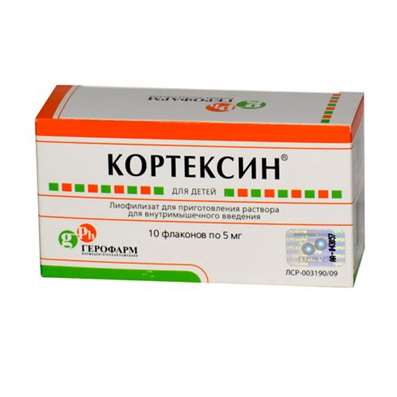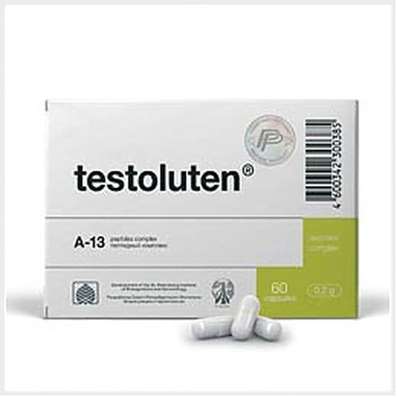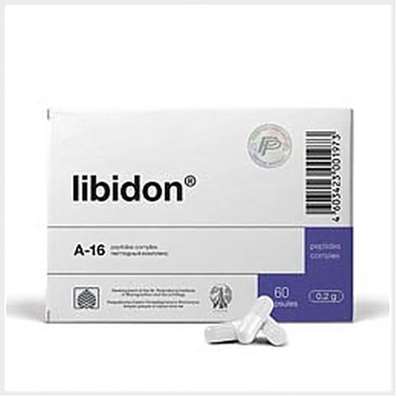Applacation of Mildronate in treatment of acute and chronic cerebrovascular accident
10 Oct 2016
Mildronate is an anti-ischemic, metabolic and antioxidant agent which is used to treat ischemic damage of organs. It was established that its therapeutic effect during acute and chronic disorders of brain circulation is associated mainly with an increase in the body content of NO, vasodilating properties of which contribute to the increase in cerebral blood flow and oxygenation of the brain. In case of ischemic stroke Mildronate® reduces the severity of neurological deficit, improves cognitive functions, reduces asthenia and dysphoria, improves quality of life. In case of dyscirculatory encephalopathy additionally it reduces the severity of cephalgia, vestibular-ataxic syndrome and dyssomnia. The pilot studies confirm the value of the drug in the treatment of transient ischemic attacks. Accumulated to date data require further confirmation in larger, placebo-controlled international studies.
Mildronate (Meldonium) was developed at the Latvian Institute of Organic Synthesis and refers to a group of agents used for the treatment of ischemic organ damage. Initially, the clinical application of Mildronate (Meldonium) associated with the treatment of cardiovascular diseases such as heart failure, angina pectoris, myocardial infarction. It has been found that the leading mechanism of drug action in these diseases is the ability to inhibit the synthesis of carnitine - transport molecules transferring long chain fatty acids into the mitochondria. The fact that it is in a healthy myocardium b-oxidation of fatty acids is the main energy source (to provide 70% of the heart needs to adenosine triphosphate (ATP)). However, this process requires large expenditures of oxygen. With the defeat of the myocardium associated with ischemia, oxygen delivery to the heart is reduced. Under these conditions, b-oxidation is less effective fatty acids, which leads to reduced formation of ATP. Furthermore, oxidized intermediates accumulate rendering a cytotoxic effect. Mildronate, disrupting the synthesis of carnitine, prevents the entry of fatty acids into the mitochondria, resulting in a lockup b-oxidation. Cage is forced to switch to another energy source - glucose. For its oxidation requires less oxygen, which is important in terms of ischemia, and, moreover, no cytotoxic products formed. This effect makes Mildronate a valuable drug for the treatment of cardio-patologic flowing with myocardial ischemia.
In further studies, it was found that Mildronate is also effective in acute and chronic disorders of cerebral circulation - ischemic stroke, vascular encephalopathy and transient ischemic attacks. However, the leading mechanism of drug action in the central nervous system (CNS) was different, different from the switching carbohydrate lipid metabolism, since in normal neurons as the principal source of energy use glucose. This brief review of the reader presents modern views on the mechanisms of action of Mildronate (Meldonium) in ischemic pathologies of the nervous system, as well as historical data about its clinical efficacy in these states.
Mechanism of Mildronate Action in ischemic pathology of nervous system
The mechanisms of Mildronate action in the CNS continue to be refined, but the studies performed to date, make it possible to introduce them as follows.
Biosynthesis of carnitine in the body occurs in several steps, the latter reaction - the conversion of gamma-butyrobetaine (GBB) in carnitine - occurs in the presence HBB-hydroxylase enzyme.
Mildronate (meldonium) inhibits the work of this enzyme, thereby disrupting formation of carnitine and increasing plasma concentrations of gamma-butyrobetaine. The latter, in turn, is subjected to esterification to form the ethyl ester of gamma-butyrobetaine. This material affects the M acetylcholine receptors and / or their own specific receptors, which leads to activation of NO-synthase - enzyme synthesizing nitric oxide (NO). As is known, NO is one of the main body of the molecules responsible for vasodilation (vasodilation).
Thus, Mildronate treatment associated with an increased content of NO in the body, vasodilator properties that determine the therapeutic effect in ischemic stroke, vascular encephalopathy and transient ischemic attacks.
The review cited by us are Mildronate and other mechanisms of action, providing assistance for acute and chronic disorders of cerebral circulation. The authors divide them into: 1) vasoprotection mechanisms, which in addition to improving myocardial metabolism, and NO-dependent vasodilation also include improved blood rheology, inhibition of atherosclerosis processes, improved glucose transport and the potentiation of insulin action; 2) neuroprotection mechanisms, which include the improvement of neuronal metabolism at the level of mitochondria and prevent mitochondrial damage, inhibition of lipid peroxidation and increase the activity of the endogenous antioxidants normalizing the expression of proteins involved in neurodegeneration, inflammation and apoptosis, restoration of the integrity of the blood brain barrier, gain regeneration of neural tissue , improving cholinergic transmission of nerve impulses.
Clinical Verification of Mildronate Capacity to Strengthen cerebral blood flow
Ability of Mildronate (Meldonium) enhances cerebral blood flow has been demonstrated in earlier studies. Thus, in 1991, in patients with ischemic stroke using tetra and bipolar rheoencephalography and inhalation method of xenon was detected amplification of cerebral hemodynamics, and the drug has been recommended for the treatment of ischemic brain disorders. In much more recent study, the same authors confirmed their earlier findings using Doppler ultrasound.
Another study in 1991 patients with circulatory encephalopathy degree II-III according echo-pulsegraphy Mildronate also showed a trend toward normalization of parameters of cerebral circulatory dynamics.
Mildronate ability has been confirmed in recent studies to enhance cerebral blood flow. In 2003, it was to assess the ability of the drug to affect brain blood flow in patients with circulatory encephalopathy due to stenosis of cerebral arteries. Using Doppler ultrasound extra- and intracranial arteries was revealed a positive impact on the performance of Mildronate® cerebral circulatory dynamics.
The authors of the study in 2007 reported that on hemodynamics in intracranial vessels is significantly affected by the speed of blood flow in the extra-cranial segments of the internal carotid artery and vertebral artery. Therefore, their work was valued linear blood flow velocity, and indices of peripheral vascular resistance in the extra-cranial arteries in these patients with circulatory encephalopathy atherosclerotic receiving Mildronate treatment . As a result, it was found that a drug contributed to the normalization of parameters of the internal carotid and vertebral artery blood flow.
The authors also reported that according to the test hypo-perfusion, made finger pressing of the internal carotid artery in the neck, including Mildronate medical complex in patients with circulatory encephalopathy atherosclerotic significantly improves the blood supply to the compensation. Thus, the test preparation increases the number of patients with compensated perfusion type.
A number of patients after acute ischemic cerebrovascular accident Mildronate reduced peripheral resistance index in the middle cerebral artery on the affected side as determined by Doppler ultrasound, indicating an improvement of microcirculation in ischemic brain regions.
The method of single photon emission computed tomography in patients with ischemic stroke in the acute stage of its development during Mildronate treatment found an increase in cerebral perfusion in areas of its original reduction, the relevant ischemic lesion on magnetic resonance imaging. The most clear improvement in cerebral blood flow was observed in patients with ischemic stroke, the type of cardiogenic embolism, ie in the absence of lesions or intracerebral small cerebral arteries [2, 8].
In the literature, there are reports that Mildronate enhances regression of brain damage by increasing the consumption of oxygen by the brain. In the study, SN Salnikov (2002) has confirmed the effectiveness of a course of the drug to improve cerebral oxygenation, while his one-time administration did not cause the therapeutic effect. However, other authors have observed positive effects and the occasional injection of the drug – Mildronate (Meldonium) improved cerebrovascular reactivity around the hearth ischemic cerebral lesions.
Efficiency of Mildronate during ischemic stroke
Clinical efficacy Mildronate in ischemic stroke (or during the formation of mixed groups of patients with ischemic stroke and traumatic brain injury) has been studied in trials. As a result, the effect of the drug was observed on a number of syndromes and symptoms of ischemic stroke.
Mildronats reduces the neurological deficit, fatigue, dysphoria, Meldonium improves cognitive function and quality of life.
In particular, Mildronate reduced the severity of neurological disorders in the acute (mostly) and subacute phase of stroke. While taking this drug noted improvement in cognitive functions such as memory, attention, speed of execution of tasks.
The drug was accompanied by a decrease in the severity of asthenic syndrome. The decrease was accompanied by dysphoria increased positive staining emotional experiences.
On improving the quality of life evidenced by the increase of the total activity of patients, their mobility and self-care ability.
In one study, it was further reported that the severity of reactive Mildronate (Meldonium) reduced inflammatory response, as evidenced by the reduction in the level of circulating immune complexes, reduced severity of endogenous intoxication was confirmed that content decreasing average molecular weight, and had a lipolytic activity.
Mildronate is an important feature is the absence of "robbing effect" to improve therapeutic results in the treatment of ischemic stroke.
Efficiency of Mildronate in encephalopathy
Clinical efficacy Mildronate with vascular encephalopathy I-III degrees of various origins (atherosclerosis, hypertension), with co-morbidities (diabetes) or without and in different age groups (including elderly patients) was studied. As a result, the effect of Meldonium was observed on a number of syndromes and symptoms of vascular encephalopathy.
As in the case of ischemic stroke, Mildronate reduced the severity of neurological disorders, as well as a positive effect on cognitive functions such as memory and attention.
The drug reduces the severity of asthenic syndrome, which was accompanied by a decrease in exhaustion and increasing the mobility of nervous processes. At the same time there was a decrease in the severity of cephalgic syndrome (headaches).
The Mildronate treatment reduces the severity of vestibular-atactic syndrome, as evidenced by a decrease in dizziness, nausea, increased stability when walking. Effect on myotonic syndrome manifested by normalization of night sleep.
Meldonium improves the quality of life of patients, which manifested an increase in the overall activity of the patients, their mental and physical performance.
Studies have shown the advantage of continuous Mildronate therapy compared with the exchange rate, because only with continuous treatment showed improvement of all assessed cognitive performance.
Efficiency of Mildronate in transient ischemic attack
Currently, researchers evaluated the possibility of using Mildronate for the treatment of transient ischemic attack. In one of these pilot studies, in the process of examination and treatment of 40 patients studied the dynamics of clinical status, psychometric data and indicators of free radical oxidation of lipids. Our study showed that in 24 patients with transient ischemic attacks after Mildronate treatment noted steady improvement in subjective status, as well as the improvement of memory and attention.
CONCLUSION
As of today, holds a large number of studies evaluating the effectiveness of Mildronate® (Meldonium) in the treatment of acute and chronic disorders of cerebral circulation. Their results suggest that the appointment of Mildronate (Meldonium) accelerates and improves the rehabilitation of patients with ischemic stroke and circulatory encephalopathy. Pilot studies also point to the value of the drug at a transient ischemic attacks.
Cumulative to date data requires further confirmation in larger, placebo-controlled international studies.

 Cart
Cart





